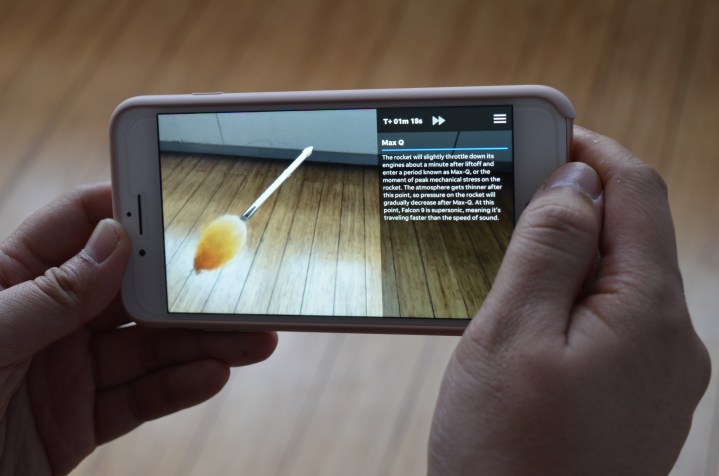
App Attack is a weekly series where we search the App Store and Google Play Store for the best apps of the week. Check out App Attack every Sunday for the latest.
No matter how old you are, anything space related is always going to be interesting — whether it’s rockets, astronauts, or the solar system. This week we have an app that will bring you closer to space missions via augmented reality.
Using 321 Launch, you’ll get to experience AR rocket launches as they take off in real time from the comfort of your smartphone. The new app is a collaboration between USA Today Network and Florida Today (one of its local news brands), and incorporates features ranging from live video of upcoming launches to a tabletop AR hologram of the rocket to view.
With the Kennedy Space Center located in Florida, developers and reporters were able to gain an even deeper understanding from an up-close and personal perspective. This allowed them to incorporate detailed visuals and even sound effects to create an app that accurately simulated what it’s like to see a rocket launch on site.
When you first open 321 Launch, you have two options to choose from — “Launch Simulation” and “Live Mission.” With Launch Simulation, you get to build and launch your own AR rocket. In this section of the app, you’ll need a flat surface to be able to “assemble” the virtual pieces. I also recommend turning on the sound, because it definitely enhances the experience.
As you begin to drag and drop all of the different parts onto the launch pad, you also get to learn about each one. On the right side of the screen, there are explanations you can read to learn more about the the process, such as the lightning towers that surround the pad, the flame trench, fueling the rocket, and the launch.
Once it’s all set to go, you can tap the “Launch” button in the bottom left-hand corner of the screen to watch it lift off. After it decouples and re-enters the atmosphere, you’ll then be able to deploy the landing legs back on to the pad. It was interesting to learn as much as I did in such a short amount of time — with such a smooth interface and enjoyable experience, you’ll forget that while launching an AR rocket, you’re also getting an education in rocket science.
In the Live Mission part of the app, you’ll be provided with a live feed when a launch is happening. During my demo with USA Today, there wasn’t a live launch happening, but I was still able to experience what it would be like, had there been one. In this section, you can switch back and forth between the live stream and AR, as well as view live commentary from Florida Today’s space reporters, who guide you through the launch, which you’ll be able to see on the side of the screen.
One of my favorite features in this section was being able to view the predicted flight path. By pointing your phone at the sky, you’ll see a line drawn out for you which informs you of the direction of the rocket. That way, you’ll also be able to track if it’s passing anywhere over your area.
Prior to a launch, you’ll be provided with a countdown on the home screen of the app. It lets you know how many days or hours to expect the next live mission. I also received a banner notification while using 321 Launch, that updated me on the status of the upcoming SpaceX Falcon 9 from Cape Canaveral.
You also have the ability to check the launch schedule and space news via the homepage, which brings you to Florida Today’s site. You can share your launch experience on Reddit, Facebook, and Twitter straight through the app as well. It’s currently available for download on both iOS and Android — right on time for the SpaceX Falcon 9 on April 2, which will give you the full experience of 321 Launch.








